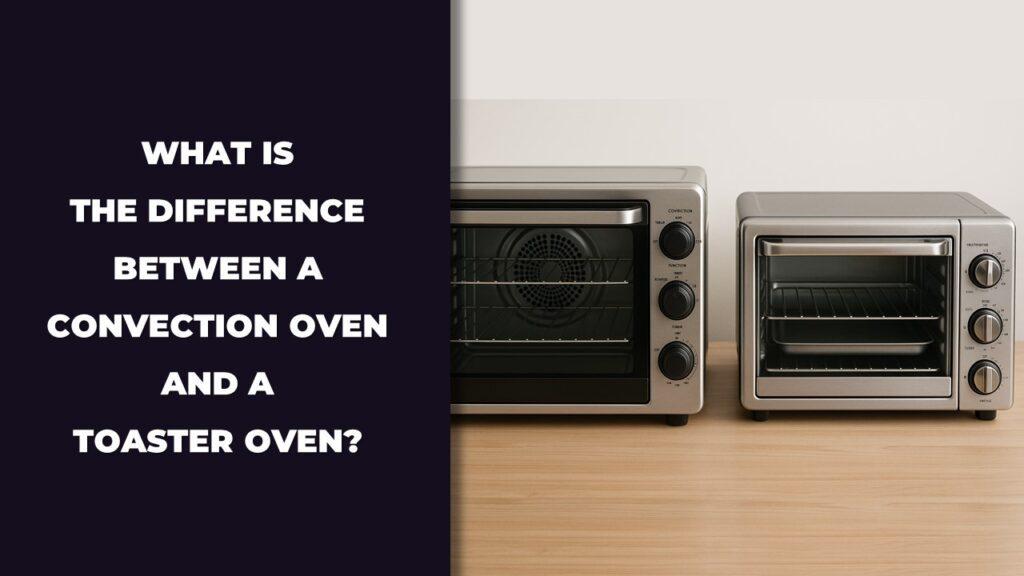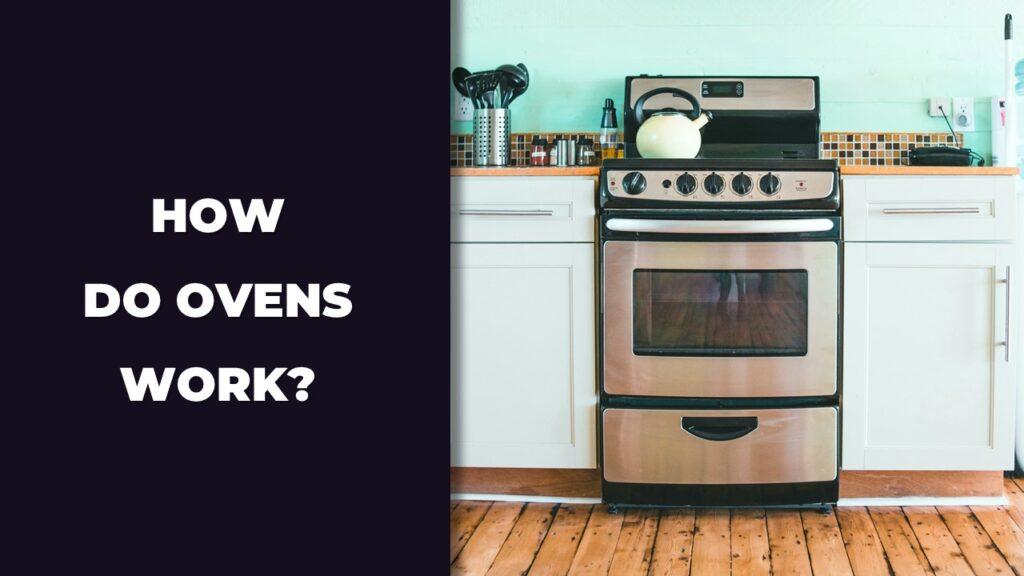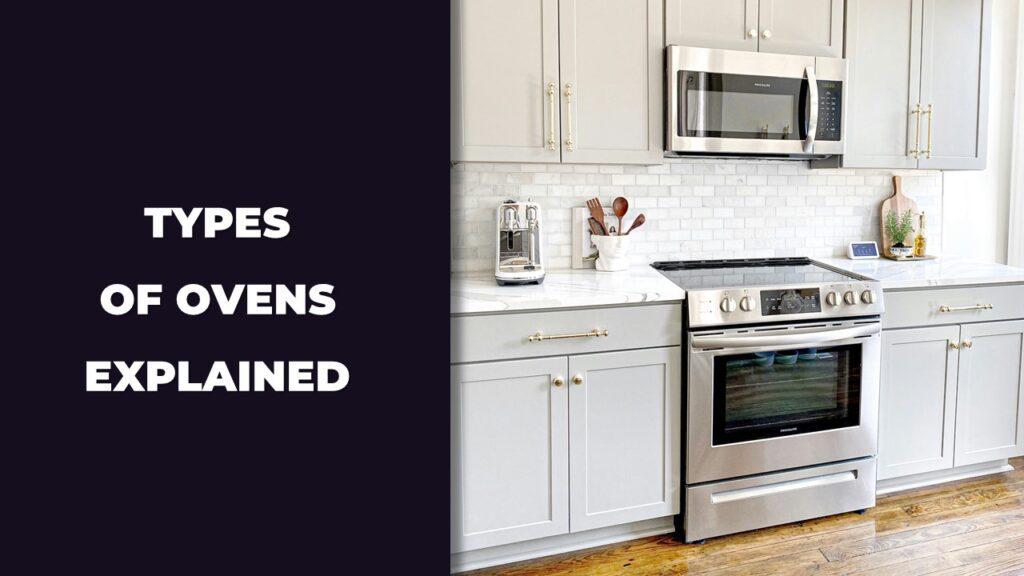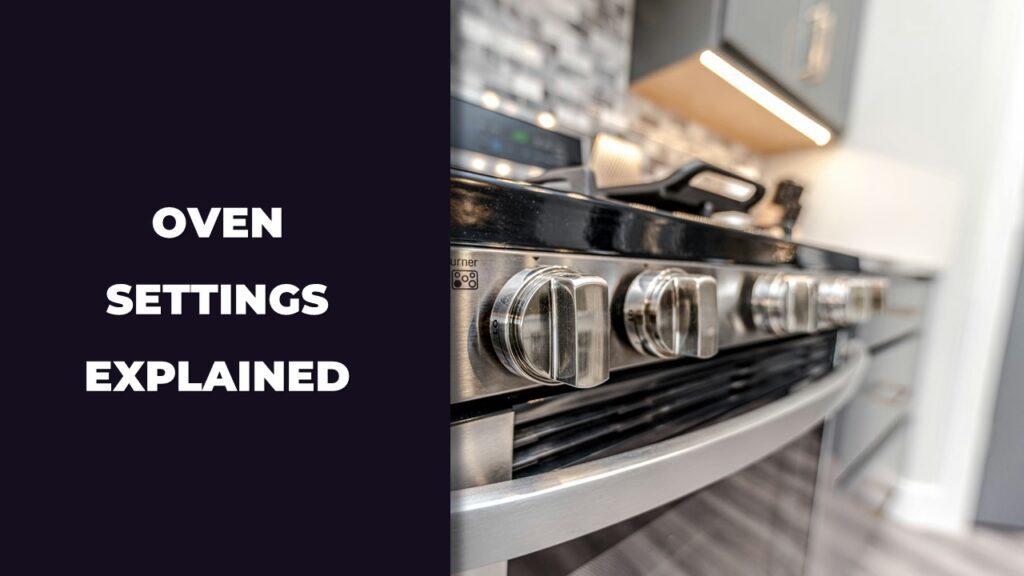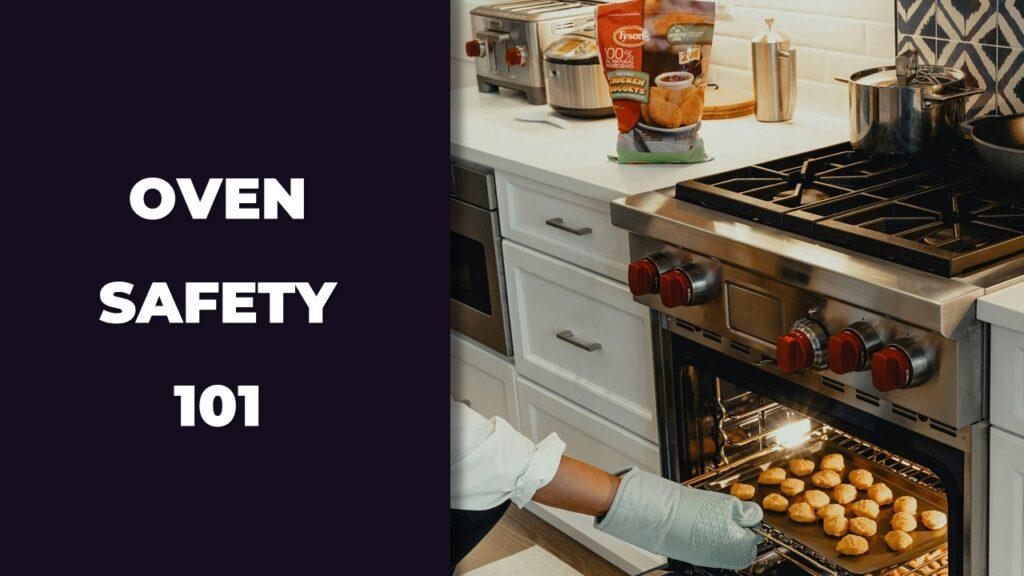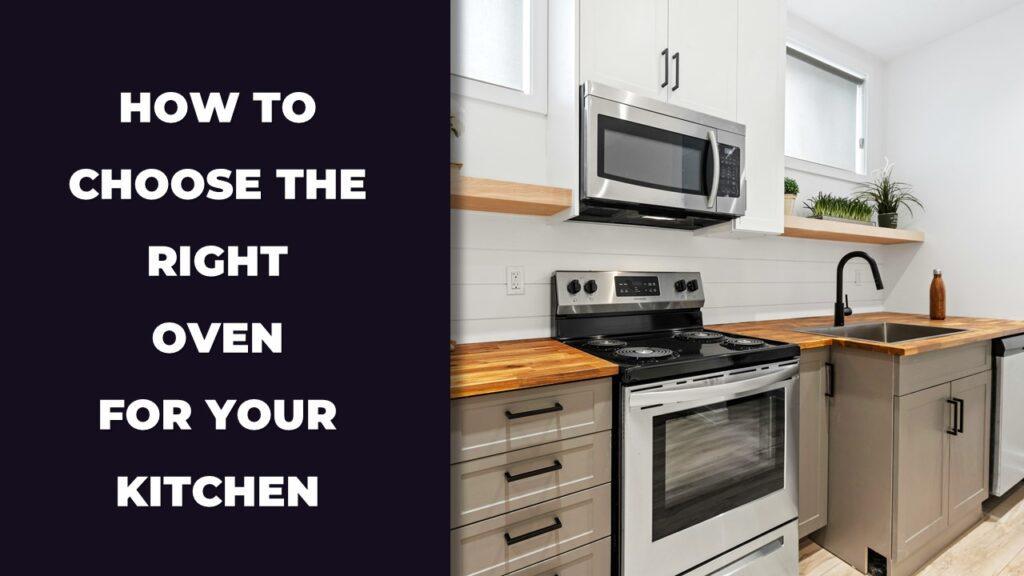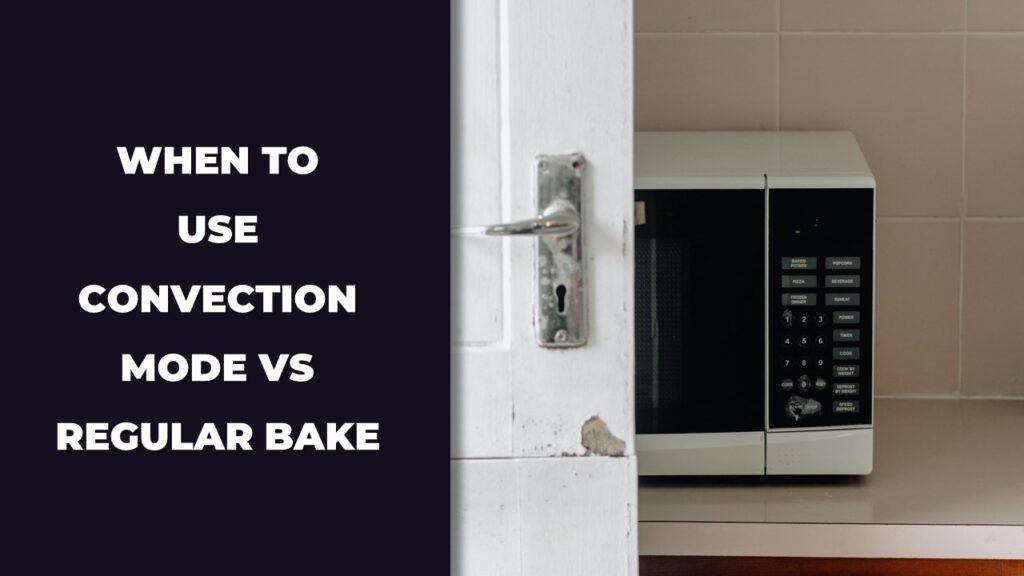
Use convection mode when you want food to cook faster, brown better, and come out crispy on the outside. It works by using a fan that blows hot air around the oven, helping everything cook more evenly. Use regular bake when you’re making softer or more delicate foods like cakes, muffins, or custards that need steady, gentle heat to rise properly and stay moist.
In this article, we’re going to walk through when to use each setting, what types of food they’re best for, and how to adjust your recipes if you switch between them. It’s going to be simple, clear, and straight to the point, like a friend helping you figure out your oven without all the confusing terms.
What Is Convection Mode?
Convection mode is an oven setting that uses a fan and exhaust system to circulate hot air, which helps cook food faster and more evenly. It’s great for getting crispy edges, golden tops, and even browning without moving your dish around. This setting is often used for roasting meats, baking cookies, or cooking multiple trays at once.
The fan inside a convection oven keeps the hot air moving, which gets rid of cold spots and helps maintain a steady temperature throughout the oven. Because of this airflow, food cooks about 20 to 25 percent faster than in regular bake mode. It also removes moisture from the surface of your food, making it ideal for dishes that need a crispy or caramelized finish.
Convection mode is helpful when you’re baking in large batches or working with foods that benefit from dry heat. Think roasted vegetables, chicken with crispy skin, or pastries with flaky layers. It saves time, delivers even results, and gives you that nice browned finish many recipes aim for.
What Is Regular Bake Mode?
Regular bake mode uses natural radiant heat from the bottom (and sometimes the top) heating elements without any fan to move the air. This creates a still, humid cooking environment that works best for foods that need gentle, consistent heat. It’s the go-to setting for cakes, muffins, custards, and bread.
Because there’s no airflow in regular bake, the heat rises slowly and spreads through the oven by natural circulation. This allows batters and doughs to rise gradually, giving them time to set without drying out. That’s why regular bake is often used when you want a moist, even texture in baked goods.
It’s also more forgiving for delicate recipes where air movement might cause problems, like cracked tops or uneven rising. If you’re baking something that needs to stay soft or spongy, regular bake mode is the better option. It gives baked goods the time and moisture they need to come out just right.
Key Differences Between Convection and Regular Bake
Convection mode uses a fan to move hot air around the oven, which leads to faster, more even cooking. Regular bake relies on still, radiant heat that rises naturally from heating elements, making it better for recipes that need a gentle and moist environment. Each mode works differently and suits different types of food.
Once you understand how each mode handles heat, time, and moisture, it’s easier to decide which one to use. The way your oven distributes heat, how quickly it cooks, and how it handles moisture can all change the outcome of your dish. Let’s look closer at what sets them apart.
Quick Comparison Table: Convection Mode vs Regular Bake
| Feature | Convection Mode | Regular Bake |
| Heat Source | Hot air circulated by a fan | Radiant heat from top and bottom elements |
| Air Movement | Yes, hot air moves constantly around food | No, air stays still and heat rises naturally |
| Cooking Speed | Faster, usually 20 to 25 percent quicker | Slower, more gradual cooking |
| Temperature Adjustment | Lower recipe temperature by 25°F | No adjustment usually needed |
| Best For | Roasts, vegetables, sheet pan meals, cookies | Cakes, muffins, quick breads, custards |
| Moisture Retention | Less moisture, drier cooking environment | More moisture, holds humidity in the oven |
| Texture Result | Crisp, golden, evenly browned surfaces | Soft, moist, tender textures |
| Multi-Rack Cooking | Works well; even results on all oven levels | Less consistent; use center rack when possible |
Heating Mechanism
Convection ovens have a fan and exhaust system that pushes hot air around the oven cavity. This moving air surrounds the food on all sides, giving more consistent heat distribution. It eliminates hot spots and creates a drier cooking environment.
Regular bake works through radiant heat from the bottom (and sometimes top) heating elements. The air stays still, so heat rises naturally and fills the space more slowly. This is helpful when you want soft textures or need time for batter to rise gently.
Cooking Time and Temperature
Convection cooking is faster. It usually cuts cooking time by 20 to 25 percent because the hot air hits food from all angles. Most recipes need a 25°F temperature reduction when using convection mode to avoid overcooking.
Regular bake takes longer because the heat builds more slowly and comes mostly from below. This works well for baked goods that need time to rise and set. There’s usually no need to adjust time or temperature when using the regular bake setting.
Moisture and Texture Outcomes
Convection creates a dry environment by moving air and pushing out moisture. This helps food crisp up on the outside, which is great for things like roasted vegetables or baked chicken.
Regular bake keeps moisture in, which helps prevent baked goods from drying out. This is why it’s the better choice for cakes, custards, or breads that should be soft and moist inside.
Rack Usage and Cooking Capacity
One big benefit of convection ovens is that they allow you to cook on multiple racks at the same time without worrying about uneven cooking. The fan keeps the air moving so heat reaches every level evenly.
With regular bake, you usually stick to the middle rack for best results. Cooking on more than one level can lead to uneven results because the heat isn’t moving—it’s just rising from the bottom.
When to Use Convection Mode
Use convection mode when you need food to cook faster, brown evenly, or crisp up on the outside. It’s ideal for roasting, baking on multiple racks, and getting golden textures without rotating pans.
This setting is especially helpful when you’re short on time or cooking several trays of food. It works well for dry-heat cooking, where crispness and color matter most. Here are some of the best times to use it:
- Roasting Meats and Poultry: Get crispy skin on chicken or a well-browned roast without overcooking the inside.
- Baking Cookies or Pastries: Bake two or three trays at once without rotating pans halfway through.
- Roasting Vegetables: Evenly cooked veggies with caramelized edges.
- Cooking Frozen Foods: Helps foods like fries or nuggets crisp up instead of going soggy.
- Toasting or Drying Foods: Great for granola, nuts, or anything that needs moisture removed.
- Reheating Leftovers: Keeps food crisp instead of making it soft or rubbery.
Convection mode gives you better browning, saves time, and handles large batches with ease. It’s especially handy for busy home cooks who want fast and even results.
When to Use Regular Bake Mode
Use regular bake mode when you’re cooking foods that need steady, gentle heat and a more humid oven environment. It’s the better choice for delicate items like cakes, muffins, quick breads, and custards that can dry out or collapse with fast-moving air.
Regular bake gives baked goods time to rise slowly and set evenly. It works especially well for recipes where moisture retention is key or where you don’t want the top to brown too quickly. This mode is also more forgiving when it comes to small temperature changes or uneven mixing.
Here are the best times to use regular bake:
- Cakes and Cupcakes: Keeps the texture soft and prevents doming or cracking.
- Muffins and Quick Breads: Helps them rise fully and stay moist inside.
- Custards and Cheesecakes: Maintains a stable temperature that prevents curdling or cracking.
- Bread Loaves: Gives dough enough time to expand before the crust forms.
- Casseroles and Thick Dishes: Gently cooks the inside without drying out the top.
- Pies and Tarts (Partially Baked): Good for fillings that need steady heat without drying the crust too early.
How to Adjust Recipes Between the Two Modes
When switching between convection and regular bake, it’s important to adjust time and temperature to match how each setting works. Convection cooks faster and dries out food more, so small changes can make a big difference. Regular bake is slower but more stable, which can be helpful for precision.
Converting Regular Bake Recipes for Convection
- Lower the Temperature: Reduce the oven temperature by 25°F to prevent overcooking or burning.
- Check Sooner: Start checking for doneness about 5 to 10 minutes earlier than the original time.
- Use the Right Bakeware: Avoid dark or heavy pans, which can overbrown in convection mode.
- Allow Air to Circulate: Don’t overcrowd the oven, and use shallow pans when possible.
- Skip Foil Covers: Foil can block airflow; only use it if the recipe truly needs it.
Can You Use Both Modes in One Recipe?
Yes, many home cooks use both modes at different stages of a recipe. You can start in regular bake to allow something to rise or set gently, then switch to convection to brown the top or speed up the finish.
Examples include:
- Roasts: Start with regular bake to cook the meat through, then finish with convection for a crispy crust.
- Bread: Use regular bake during the rise, then convection at the end to harden the crust.
- Casseroles: Bake fully in regular mode, then switch to convection briefly to brown cheese on top.
Using both modes together can give you better texture and flavor when timed right.
Common Mistakes to Avoid
Many cooking problems in the oven come from using the wrong setting or skipping simple adjustments. Knowing what not to do can save your food from drying out, burning, or baking unevenly.
Here are some common mistakes to watch for:
- Using Convection for Delicate Baked Goods: Airflow can cause cakes and muffins to collapse or brown too fast.
- Forgetting to Adjust Temperature in Convection Mode: Recipes written for regular bake need a 25°F temperature drop.
- Overcrowding the Oven in Convection: Blocks airflow, causing uneven cooking.
- Rotating Trays Too Late in Regular Bake: If you’re using more than one rack, rotate halfway to avoid uneven browning.
- Using Dark Bakeware in Convection: These pans heat faster and can lead to burnt bottoms.
- Expecting Moist Results in Convection Mode: This setting dries out food more, so it’s not the best for dishes that need steam or softness.
- Skipping Preheat Time: Both settings need a fully heated oven to cook properly from the start.
Avoiding these issues will help you get the results you’re after, no matter which oven mode you choose.
Special Considerations for Specific Foods
Some foods react better to convection mode, while others come out best with regular bake. The way a recipe is structured—whether it needs dry heat, gentle rising, or surface browning—can help you decide which mode to use for better texture and flavor.
Certain dishes are more sensitive to airflow, while others benefit from it. Baking a cake is not the same as roasting vegetables, and choosing the wrong mode can ruin your hard work. Here’s how different foods behave under each setting:
- Cakes and Muffins: Use regular bake. Convection can cause uneven rising, cracked tops, or a crust that forms too fast.
- Cookies: Use convection for baking multiple trays evenly. But for softer centers, some bakers still prefer regular bake.
- Bread: Use regular bake during the rising phase to keep the dough from forming a crust too early. You can switch to convection at the end for a crispy crust.
- Roasted Vegetables: Convection helps get browned edges and even cooking, especially when roasting large batches.
- Poultry and Meats: Convection mode creates crisp skin and even doneness, especially for whole chickens, turkeys, or roasts.
- Custards and Cheesecakes: Stick with regular bake. These need a slow, stable heat to avoid curdling or cracking.
- Pizzas: Convection can help the crust cook faster and get crispy while keeping the toppings bubbly and hot.
Final Thoughts
When it comes to convection mode vs regular bake, the best choice depends on what you’re cooking and how you want it to turn out. Convection mode works best for foods that need dry heat, even browning, and shorter cooking times. It’s perfect for roasting, multi-tray baking, and getting crispy results.
Regular bake is the better option for softer, moisture-rich foods like cakes, muffins, and custards. It gives your food a gentle environment to rise and set without being disturbed by airflow. When you’re baking something delicate or full of liquid, regular bake is more forgiving and dependable.
Understanding how each mode affects your food lets you match the right setting to each recipe. Whether you’re roasting a chicken or baking banana bread, using the proper oven mode makes all the difference in how your food looks, tastes, and cooks.
Related FAQs
Is Convection Better for Everything?
No, convection is not better for everything. It works well for roasting, crisping, and baking multiple trays, but regular bake is better for delicate recipes like cakes, custards, or quick breads that need steady, gentle heat.
Can I Bake Cakes in a Convection Oven?
Yes, but it’s not ideal for most cakes. The moving air can cause uneven rising, cracked tops, or dry edges. Regular bake is usually the safer choice for soft batters and even texture.
Should I Preheat Differently for Each Mode?
No major difference in preheating. Both convection and regular bake modes should be fully preheated before you put food in. Some convection ovens preheat faster, but always wait until the target temperature is reached.
Why Do My Cookies Burn in Convection?
Your oven might be too hot or your bakeware could be too dark. Convection ovens need a 25°F temperature drop from the regular recipe. Using light-colored pans can also help prevent overbrowning.
Do All Ovens Adjust Automatically for Convection?
Not all ovens do. Some models have a built-in auto-conversion feature that lowers the temperature automatically when convection mode is selected. Always check your manual to be sure.
Can I Use Foil in a Convection Oven?
Yes, but use it carefully. Avoid covering oven racks or blocking airflow. Foil should only be used on pans or around food if it doesn’t stop hot air from circulating freely.

At our core, we’re a group of passionate households and gardening tools and appliances users and enthusiasts. We dive deep into the world of tech, especially when it’s about your household or gardening electric items. We try to provide as much value to the readers with our information and how to blog articles as possible. For affiliate articles our honest and transparent reviews of essential tech products are rooted in real-world experience. We take great satisfaction in offering unbiased evaluations, ensuring that you can make informed decisions when investing in your desired techs.

